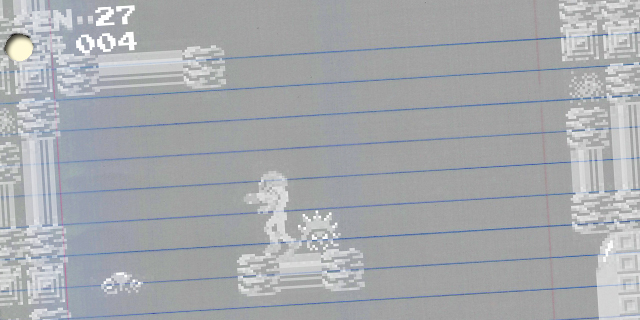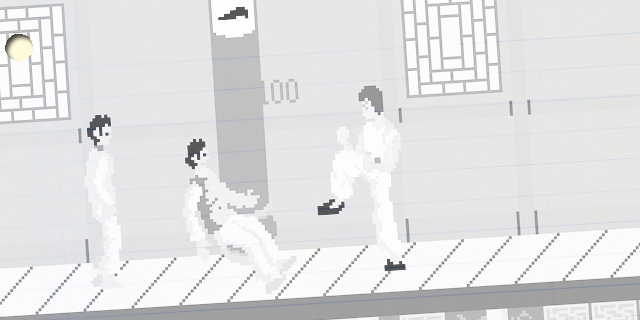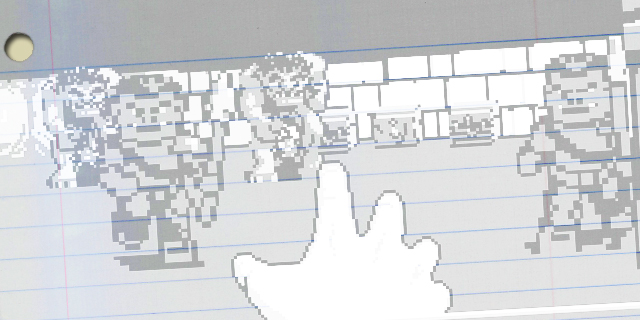
Genre 101 is a series that looks at the past and present of a game genre to find lessons about what defines it. In this installment, Eric Albuen explains the ins and outs of rhythm games.
Repeat after me
 Eric Albuen: While not necessarily a music game itself, Simon was one of the first games widely available to the public that introduced musical elements to assist in the gameplay. The player would have to play a sequence that the game provides for you. Along with the flashing lights to assist you, the game had subtle tones for each color. Whether players knew it or not, they were repeating back a set of notes in harmony no matter which order they played them in. READ MORE
Eric Albuen: While not necessarily a music game itself, Simon was one of the first games widely available to the public that introduced musical elements to assist in the gameplay. The player would have to play a sequence that the game provides for you. Along with the flashing lights to assist you, the game had subtle tones for each color. Whether players knew it or not, they were repeating back a set of notes in harmony no matter which order they played them in. READ MORE

Genre 101 is a series that looks at the past and present of a game genre to find lessons about what defines it. This time, we get a better sense of the recursive exploration action-platformer from “guest lecturer” Chris Dominowski.
A world, more open
 Chris Dominowski: Before the Famicom, anything more single-screen arcade games was simply too taxing for a home console. Given both technical limitations and an arcade-focused development mentality, the concept of a large, open-world adventure was practically inconceivable to most. On Nintendo’s new platform, a game could combine the platforming skill-based gameplay of Mario and the free-roaming adventure gameplay of Zelda into something entirely new. READ MORE
Chris Dominowski: Before the Famicom, anything more single-screen arcade games was simply too taxing for a home console. Given both technical limitations and an arcade-focused development mentality, the concept of a large, open-world adventure was practically inconceivable to most. On Nintendo’s new platform, a game could combine the platforming skill-based gameplay of Mario and the free-roaming adventure gameplay of Zelda into something entirely new. READ MORE

Genre 101 is a series that looks at the past and present of a game genre to find lessons about what defines it. This time, “guest lecturer” Lucas White gives us a primer on the beat-’em-up.
A new path for combat
 Lucas White: Before Kung-Fu Master, combat games were generally one-on-one affairs. Kung-Fu Master bears a rudimentary resemblance to later, more refined games, as the player navigates down linear paths, punching and kicking endlessly spawning enemies before reaching the boss fights. This basic formula would lead to Renegade and later Double Dragon. The familiar street brawling setting trope came into play, and players were given more combat options, such as the use of items and vertical movement. READ MORE
Lucas White: Before Kung-Fu Master, combat games were generally one-on-one affairs. Kung-Fu Master bears a rudimentary resemblance to later, more refined games, as the player navigates down linear paths, punching and kicking endlessly spawning enemies before reaching the boss fights. This basic formula would lead to Renegade and later Double Dragon. The familiar street brawling setting trope came into play, and players were given more combat options, such as the use of items and vertical movement. READ MORE

Genre 101 is a new series that looks at the past and present of a game genre to find lessons about what defines it. Each installment, Graham Russell brings in an expert “guest lecturer” to discuss significant and representative releases and topics. We start with the first-person shooter, and guest lecturer Andrew Passafiume.
Labyrinthine beginnings
 Andrew Passafiume: Very few people talk about (or are aware of) what is considered by many to be the first “first-person shooter.” Catacomb 3-D, developed by id Software, technically isn’t a shooter in the traditional sense (you use magic instead of guns), yet it is the game that established the id formula and eventually led the company down the path to create the shooters we are more familiar with. While many people consider Wolfenstein 3D as the shooter that started it all, they often overlook Catacomb and how it essentially moved the industry towards the future of first-person shooters. READ MORE
Andrew Passafiume: Very few people talk about (or are aware of) what is considered by many to be the first “first-person shooter.” Catacomb 3-D, developed by id Software, technically isn’t a shooter in the traditional sense (you use magic instead of guns), yet it is the game that established the id formula and eventually led the company down the path to create the shooters we are more familiar with. While many people consider Wolfenstein 3D as the shooter that started it all, they often overlook Catacomb and how it essentially moved the industry towards the future of first-person shooters. READ MORE

 Eric Albuen: While not necessarily a music game itself, Simon was one of the first games widely available to the public that introduced musical elements to assist in the gameplay. The player would have to play a sequence that the game provides for you. Along with the flashing lights to assist you, the game had subtle tones for each color. Whether players knew it or not, they were repeating back a set of notes in harmony no matter which order they played them in. READ MORE
Eric Albuen: While not necessarily a music game itself, Simon was one of the first games widely available to the public that introduced musical elements to assist in the gameplay. The player would have to play a sequence that the game provides for you. Along with the flashing lights to assist you, the game had subtle tones for each color. Whether players knew it or not, they were repeating back a set of notes in harmony no matter which order they played them in. READ MORE



 Chris Dominowski: Before the Famicom, anything more single-screen arcade games was simply too taxing for a home console. Given both technical limitations and an arcade-focused development mentality, the concept of a large, open-world adventure was practically inconceivable to most. On Nintendo’s new platform, a game could combine the platforming skill-based gameplay of Mario and the free-roaming adventure gameplay of Zelda into something entirely new.
Chris Dominowski: Before the Famicom, anything more single-screen arcade games was simply too taxing for a home console. Given both technical limitations and an arcade-focused development mentality, the concept of a large, open-world adventure was practically inconceivable to most. On Nintendo’s new platform, a game could combine the platforming skill-based gameplay of Mario and the free-roaming adventure gameplay of Zelda into something entirely new. 
 Lucas White: Before Kung-Fu Master, combat games were generally one-on-one affairs. Kung-Fu Master bears a rudimentary resemblance to later, more refined games, as the player navigates down linear paths, punching and kicking endlessly spawning enemies before reaching the boss fights. This basic formula would lead to Renegade and later Double Dragon. The familiar street brawling setting trope came into play, and players were given more combat options, such as the use of items and vertical movement.
Lucas White: Before Kung-Fu Master, combat games were generally one-on-one affairs. Kung-Fu Master bears a rudimentary resemblance to later, more refined games, as the player navigates down linear paths, punching and kicking endlessly spawning enemies before reaching the boss fights. This basic formula would lead to Renegade and later Double Dragon. The familiar street brawling setting trope came into play, and players were given more combat options, such as the use of items and vertical movement. 
 Andrew Passafiume: Very few people talk about (or are aware of) what is considered by many to be the first “first-person shooter.” Catacomb 3-D, developed by id Software, technically isn’t a shooter in the traditional sense (you use magic instead of guns), yet it is the game that established the id formula and eventually led the company down the path to create the shooters we are more familiar with. While many people consider Wolfenstein 3D as the shooter that started it all, they often overlook Catacomb and how it essentially moved the industry towards the future of first-person shooters.
Andrew Passafiume: Very few people talk about (or are aware of) what is considered by many to be the first “first-person shooter.” Catacomb 3-D, developed by id Software, technically isn’t a shooter in the traditional sense (you use magic instead of guns), yet it is the game that established the id formula and eventually led the company down the path to create the shooters we are more familiar with. While many people consider Wolfenstein 3D as the shooter that started it all, they often overlook Catacomb and how it essentially moved the industry towards the future of first-person shooters. 















